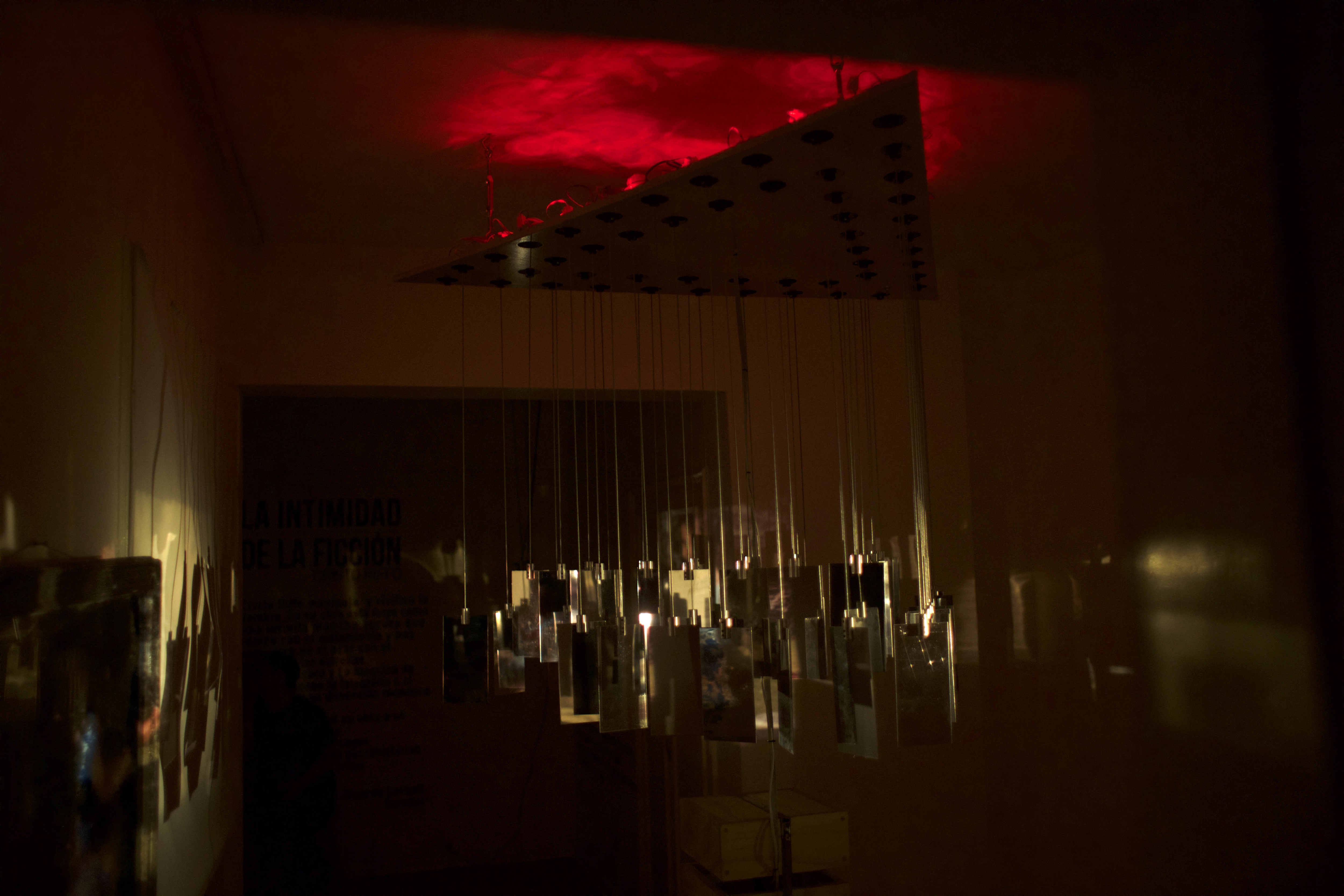“The Dark Room” consists of three 8mm projectors suspended from the ceiling by an upper support of three steel bars, its projection and refraction surface being 50 polished metal mirrors mounted on a triangular wooden structure, located in the center of the room. The projectors face each side of the triangle respectively. Each of these mirrors are connected to a Motor, which moves in relation to the positioning of the spectators in the space, using as a measurement system with a sensor of the type LIDAR.
This movement is not random, but is thought of as an internal physics, a kind of microgravity simulated algorithmically between the audience and the mirrors. Being this logic based on the movement of the foliage of the trees and the wind, a subtle impact, as a caress that extends in chain by the squares of a citie, or in this case, through the exhibition hall.
The body in space is the force that drives the mirrors, like leaves that vibrate by the wind; Producing with this gesture the rupture of the filmic image, transforming it in prism that instead of defragmenting the light spectrum, defragment the beholders eye. The film is held in a permanent loop using pulleys ranging from the ceiling of the room to the entrance slot of the projectors. The distance between the projectors and the ceiling is what determines the duration of the loop, producing a unique relationship with each place where the work is mounted.
This movement is not random, but is thought of as an internal physics, a kind of microgravity simulated algorithmically between the audience and the mirrors. Being this logic based on the movement of the foliage of the trees and the wind, a subtle impact, as a caress that extends in chain by the squares of a citie, or in this case, through the exhibition hall.
The body in space is the force that drives the mirrors, like leaves that vibrate by the wind; Producing with this gesture the rupture of the filmic image, transforming it in prism that instead of defragmenting the light spectrum, defragment the beholders eye. The film is held in a permanent loop using pulleys ranging from the ceiling of the room to the entrance slot of the projectors. The distance between the projectors and the ceiling is what determines the duration of the loop, producing a unique relationship with each place where the work is mounted.



ASSEMBLY AND PRODUCTION OF WORK: Esteban Perez
ENGINEERING AND PROGRAMMING: Pedro Riffo & Pedro Toledo
RECORD FILMING: Voltage Productions
ENGINEERING AND PROGRAMMING: Pedro Riffo & Pedro Toledo
RECORD FILMING: Voltage Productions

